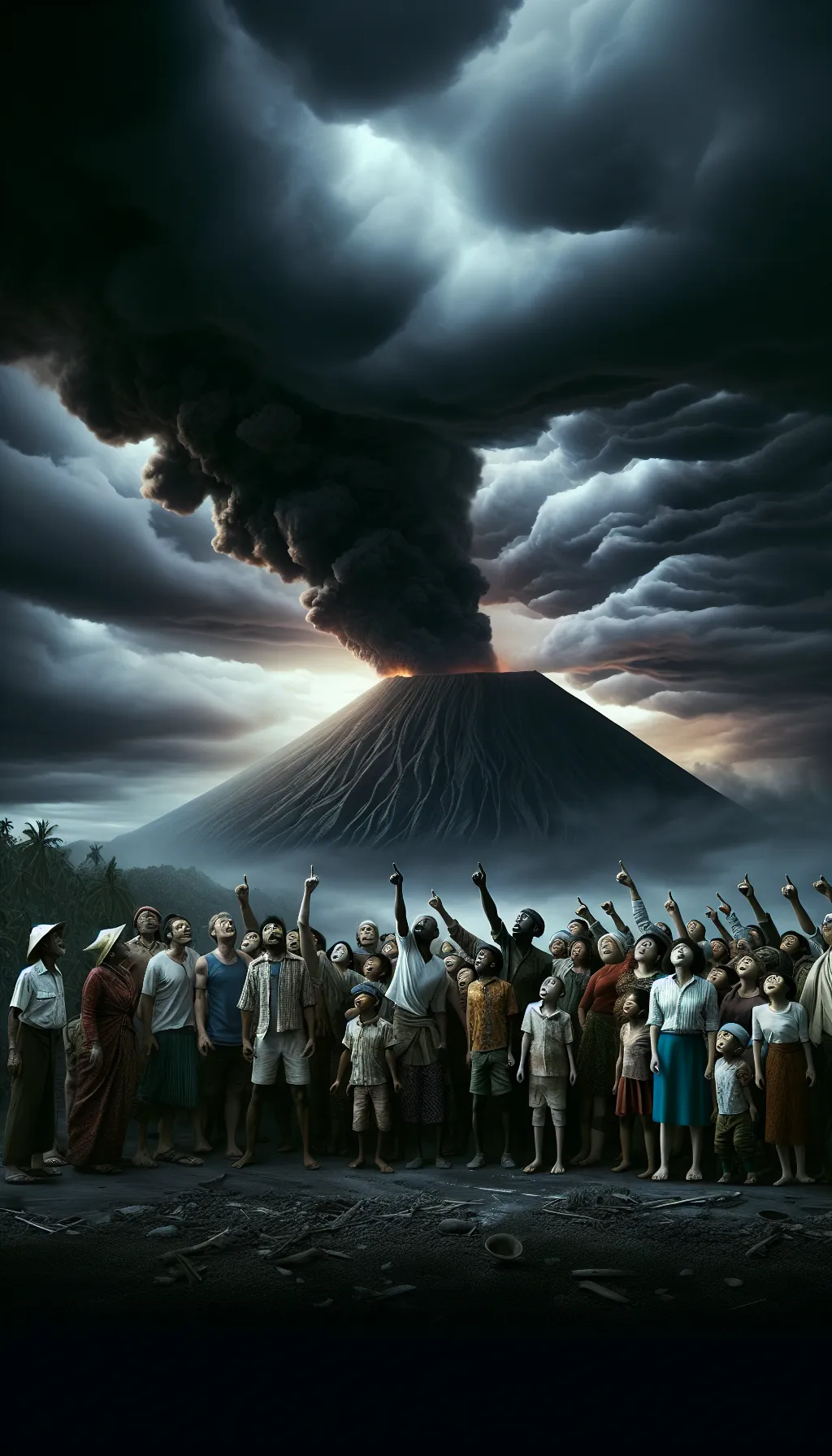Indonesia – The Day the Sky Turned Dark – April 10–11, 1815
TLDR;
- Event: Mount Tambora erupted on April 10–11, 1815, in Indonesia, with the explosion heard over 1,600 miles (2,600 km) away.
- Immediate Impact: 10,000–12,000 people died on Sumbawa and nearby islands, with pyroclastic flows causing widespread destruction.
- Global Consequences: The eruption led to the ‘Year Without a Summer’ in 1816, causing crop failures, famine, and social unrest worldwide due to blocked sunlight and altered weather patterns.
- Legacy: The event highlighted nature’s power to affect global climate and human societies, with total fatalities possibly exceeding 70,000.
–
Story
The ground trembled beneath the feet of the villagers on Sumbawa Island, Indonesia, as the sky above Mount Tambora darkened ominously. It was April 10, 1815, and the world was about to witness one of the most cataclysmic volcanic eruptions in history.

For days, the mountain had grumbled and smoked, but nothing could prepare the islanders for the explosive fury that was about to be unleashed. With a deafening roar, Mount Tambora erupted, spewing ash and pumice miles into the sky. The explosion was heard over 1,600 miles (2,600 km) away, and the ash cloud spread across the globe, blocking sunlight and altering weather patterns.
The immediate devastation was catastrophic. 10,000–12,000 people perished on Sumbawa and nearby islands in the eruption and its aftermath, as pyroclastic flows razed everything in their path. But the true reach of Tambora’s wrath was felt far beyond Indonesia, with total fatalities from starvation and disease possibly reaching over 70,000.
The following year, 1816, became known as the ‘Year Without a Summer.’ Crops failed across Europe and North America, leading to widespread famine and social unrest. The skies remained eerily dim, and temperatures plummeted, as Tambora’s volcanic ash and sulfur aerosols took several months to fully circulate the globe, reflecting sunlight away from the Earth. While some regions experienced extreme rainfall and flooding, others faced unrelenting cold.
Mount Tambora’s eruption was a stark reminder of nature’s power to reshape the world. It was a disaster that transcended borders, affecting millions and altering the course of history.
–
| Would a different response to the eruption have changed the course of history? |